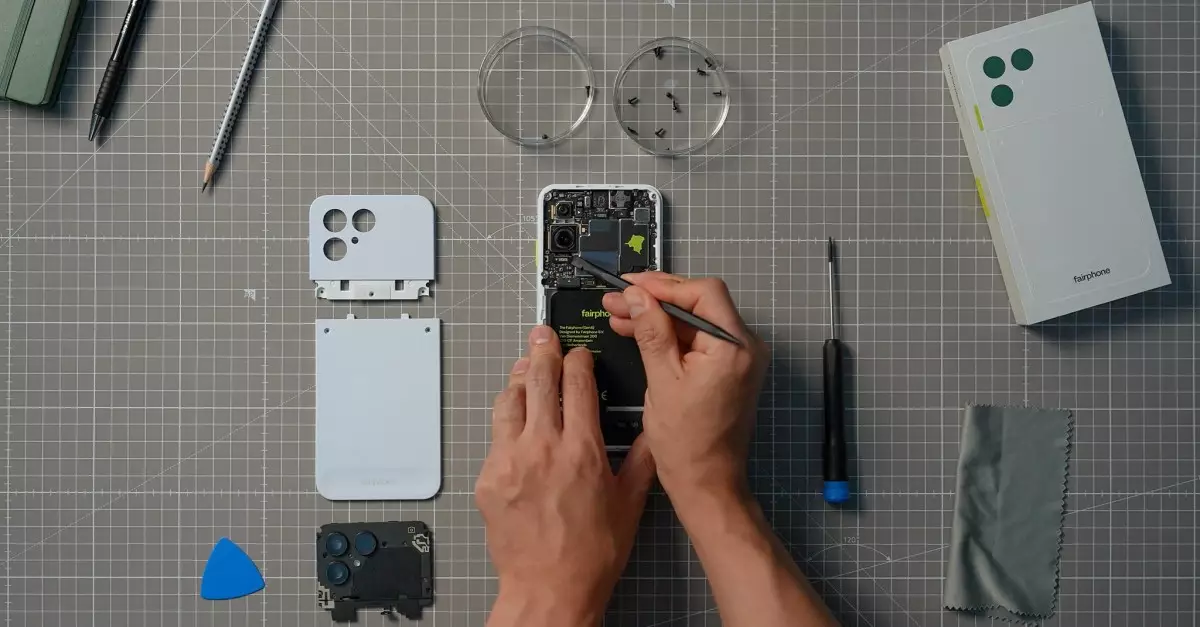The latest release of the Fairphone 6 marks a significant milestone in the evolution of environmentally-conscious smartphones. Unlike the sea of flagship devices boasting glitz and raw power, the Fairphone 6 emphasizes a fundamental shift: durable, repairable, and ethically crafted technology. This dual focus on innovation and sustainability elevates it beyond mere hardware specifications. The company’s unwavering commitment to prolonging device lifespan and reducing electronic waste is not just commendable; it challenges the industry to rethink priorities. While many smartphones chase the latest processors and camera lenses, Fairphone’s strategic design demonstrates that longevity and user empowerment are equally, if not more, vital in the modern tech landscape.
A Benchmark in Repairability and User Control
The most striking aspect of the Fairphone 6 lies in its maintained reputation as a leader in repairability. Earning a flawless score from iFixit for the fifth consecutive time, it underscores a core philosophy: empowering users to easily service their devices. The slight shift away from tool-free battery replacements to a more controlled screw-based system illustrates a calculated compromise—favoring slimmer form factors and internal stability over maximum convenience. Nevertheless, the use of only a T5 Torx screwdriver and a mere seven screws to access critical components positions the Fairphone 6 as an exemplar in DIY repairability. This approach demystifies device maintenance, cultivating a culture of longevity that diverges sharply from the planned obsolescence prevalent elsewhere.
Design Philosophy: Balancing Minimalism with Functional Repairability
What makes the Fairphone 6 particularly compelling is its meticulous design that marries minimalism with modularity. The compact form factor, combined with an intuitive design for component replacement, exemplifies hardware engineering done right. The removal of glue from the mainboard and the strategic placement of screws—necessary only for the slim soft-pouch battery—highlight a thoughtful approach. The incorporation of a swappable backplate not only gives users the ability to customize aesthetically but also promotes a sustainable lifecycle through interchangeable accessories, reminiscent of more niche modular phones like the CMF Phone Pro 2. Yet, even with these strengths, the device admits compromises—its dual rear cameras are basic, and the Qualcomm Snapdragon 7S Gen 3 isn’t a performance beast. These trade-offs reveal that the primary aim isn’t top-tier specs but a responsible, repairable design.
Long-Term Support as a Core Value
Fairphone’s commitment extends well beyond hardware. The company’s promise of seven years of Android updates and eight years of security patches indicates a forward-thinking approach focused on user retention and environmental impact. Coupled with a five-year warranty and a loyalty program rewarding thoughtful usage and repairs, the Fairphone 6 firmly positions itself as more than just a smartphone; it’s a movement toward a more sustainable consumption model. This dedication to long-term support disrupts the conventional cycle of rapid device replacement, urging consumers and manufacturers alike to prioritize durability and repairability.
Market Positioning and Ethical Choices
Pricing the Fairphone 6 at €599 in Europe and $899 in the US reveals nuanced market positioning. While the device commands a premium—reflecting its sustainable ethos and repair-friendly design—it also signals a shift towards a more conscious consumer base willing to invest in ethics over raw performance. Its availability in different configurations and regions, such as the preloaded de-Googled Murena OS in the US, underscores its role as a flagship for privacy-conscious, environmentally-aware consumers. The device’s incremental improvements and consistent high repair scores set a tone for the industry: that durability, ethical manufacturing, and user autonomy are desirable, even in an increasingly commoditized smartphone market.
This assessment of the Fairphone 6 underscores that the real power of modern smartphones lies not solely in their hardware prowess, but in their capacity to endure, be repaired, and reduce environmental impact. It challenges the industry’s status quo and champions a future where technology serves both people and the planet.


Leave a Reply